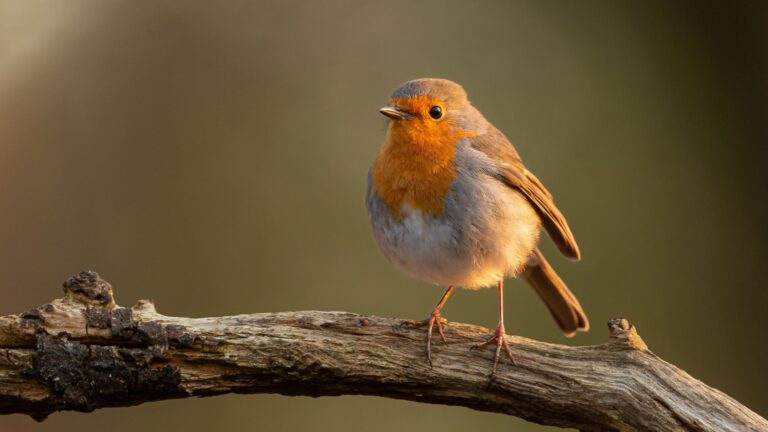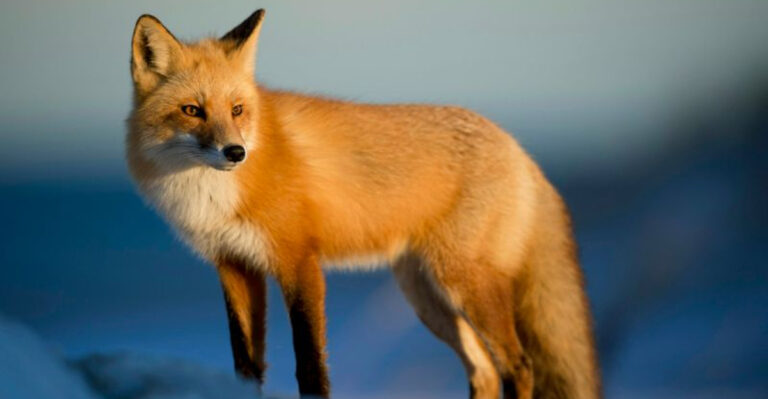These Are The Largest Alligators Ever Found In The U.S.
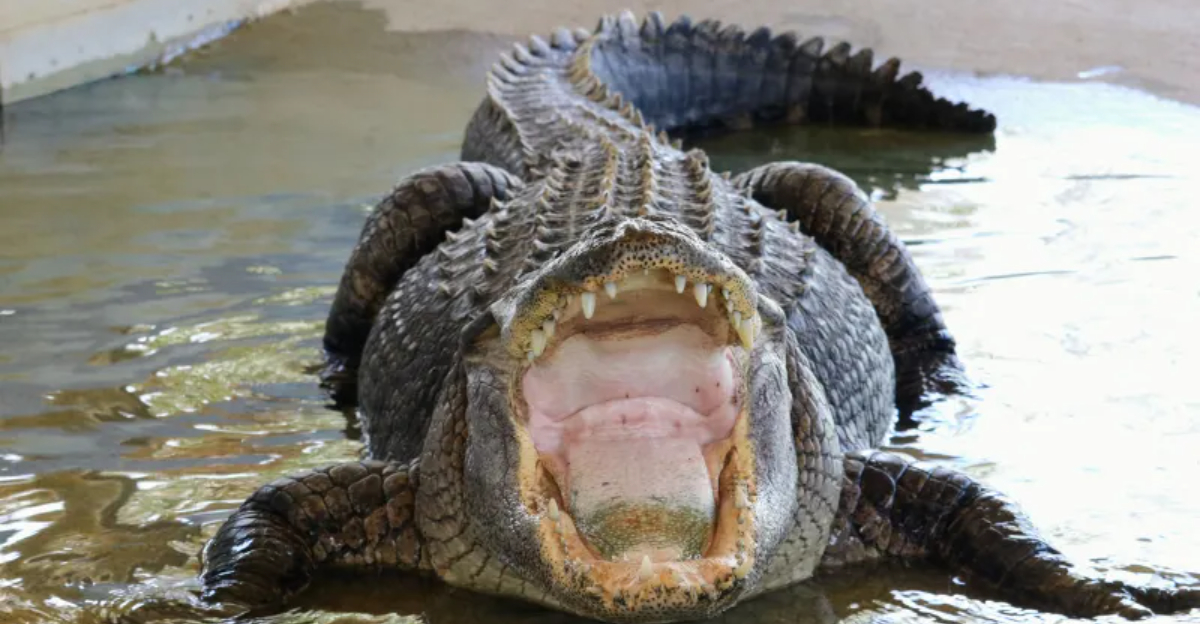
Crocodiles have captivated human interest for centuries due to their prehistoric roots and striking appearance.
In the U.S., these remarkable creatures have been known to grow to astonishing sizes. Alligators and crocodiles are indigenous to the southeastern part of the country, predominantly inhabiting states like Florida, Louisiana, Georgia, Alabama, Mississippi, and Texas.
Consequently, many of the largest specimens on record hail from these areas. So, join us as we delve into the tales of the biggest crocodiles ever discovered in the U.S., each one carrying its own fascinating narrative and importance.
1. Alabama – The Stokes Alligator
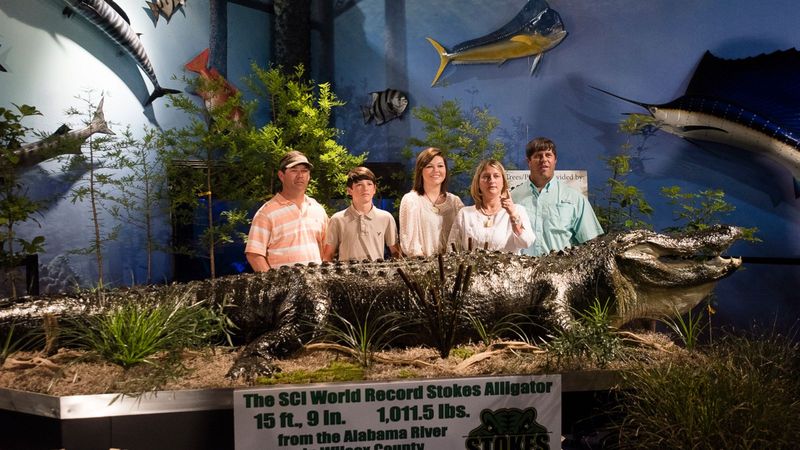
In the verdant landscapes of Autaugaville, Alabama, the Stokes Alligator reigns supreme as a true giant among its peers. Captured in 2014, this colossal creature measured a jaw-dropping 15 feet and 9 inches, and tipped the scales at over 1,000 pounds.
Known for its imposing size, the Stokes Alligator continues to hold the title of the largest officially recorded alligator in the United States. Its capture was indeed an event of monumental proportions, drawing attention from wildlife enthusiasts and experts alike.
The sheer size and weight of this alligator make it a fascinating subject of study. Its capture involved meticulous planning and immense courage, as dealing with such a massive reptile is no small feat. The alligator’s presence in the waters of Alabama serves as a reminder of the state’s rich biodiversity and the impressive scale of nature’s creations.
Encounters like these underscore the importance of preserving natural habitats, allowing such incredible wildlife to thrive in their natural environments.
As you explore the stories of giant alligators in the U.S., the Stokes Alligator stands out not just for its size, but for its significance in the annals of wildlife records. It remains a symbol of Alabama’s wild and untamed beauty.
2. Florida – Lake Washington Giant
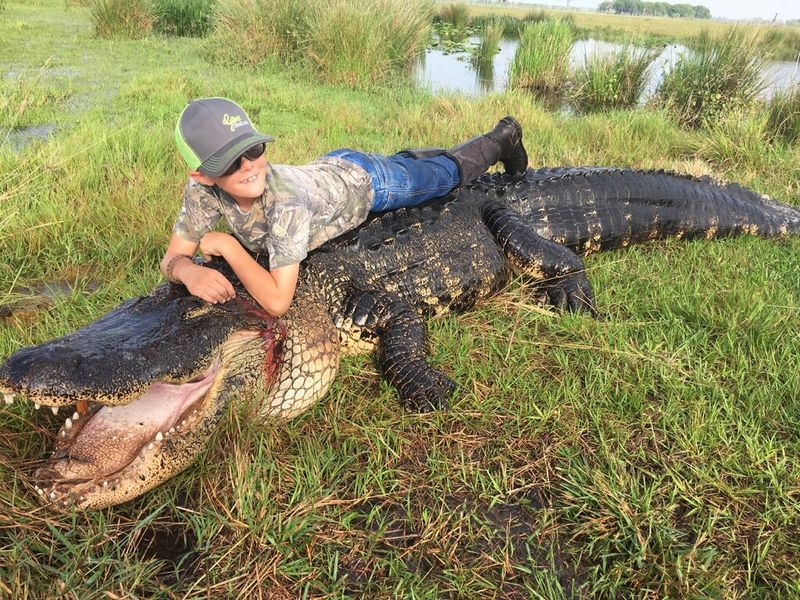
Florida, known for its sunny beaches and vibrant wildlife, is home to some of the largest alligators in the United States. In November 2010, Lake Washington in Brevard County became the center of attention when Robert Ammerman captured an enormous alligator measuring 14 feet 3.5 inches and weighing 654 pounds. This remarkable feat set a new record for the state, highlighting the intriguing diversity of Florida’s wildlife.
The capture was not just about setting a record; it was a testament to the skills and bravery of those who venture into the wild to study these formidable creatures. The Lake Washington Giant showcases the alligator’s adaptability and strength, thriving in Florida’s lush aquatic environments. The state’s unique ecosystem supports a wide range of fauna, where such large reptiles can flourish.
The story of this giant alligator is a thrilling reminder of nature’s unpredictability and the wonders that await in the great outdoors. It encourages wildlife enthusiasts to respect and appreciate the habitats that allow such magnificent creatures to exist, emphasizing the need for conservation and awareness. Florida’s wildlife continues to captivate and inspire those who seek adventure and discovery.
3. Georgia – Lake Eufaula Behemoth
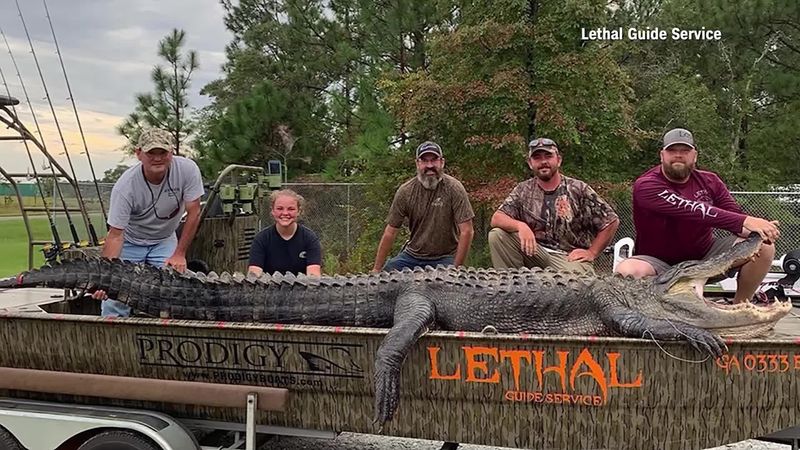
In the picturesque setting of Lake Eufaula, Georgia, a father-daughter duo made headlines with their extraordinary catch. In September 2019, Derrick and Shelby Snelson captured a massive alligator measuring 14 feet 1.75 inches and weighing 700 pounds.
This remarkable achievement put Georgia on the map for having one of the largest recorded alligators, captivating the imagination of many wildlife enthusiasts.
The Snelsons’ adventure was not just a thrilling encounter with nature, but also a testament to family bonding in the great outdoors. The capture involved patience, precision, and a deep understanding of the local ecosystem. It showcased the richness of Georgia’s natural habitats, where large reptiles like this behemoth can roam freely.
Such experiences provide a window into the dynamic world of Georgia’s wildlife, inspiring conservation efforts and a deeper appreciation for the state’s ecological diversity.
The Lake Eufaula Behemoth remains a symbol of the state’s vibrant natural heritage, encouraging people to explore and protect the environments that support such magnificent creatures. The story of this alligator is a compelling reminder of the wonders that nature holds for those willing to seek them out.
4. Louisiana – The Marsh Island Mystery
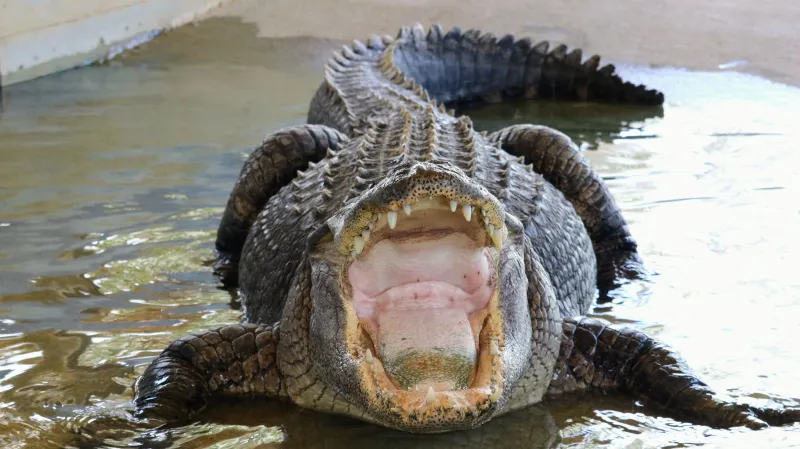
Louisiana’s swamps and marshes are legendary for their rich biodiversity and mysterious allure. Among these, the tale of the Marsh Island alligator, allegedly caught by Edward McIlhenny in 1890, stands as an enigmatic part of wildlife lore.
This colossal creature reportedly measured an astounding 19 feet 2 inches. Although lacking verifiable evidence, this story continues to intrigue and mystify, a testament to the legends that the Louisiana wilds inspire.
The narrative of this giant alligator highlights the allure and mystery often associated with Louisiana’s natural environments.
These swamps and marshlands have long captured the imagination, with tales of creatures larger than life lurking in their depths. Such stories are woven into the cultural fabric of the region, reflecting the fascination and respect that people have for the untamed wilderness.
While the Marsh Island alligator’s size remains unofficial, its legend persists, encouraging exploration and respect for the unknown.
It serves as a reminder of the power and mystery inherent in nature, inviting curious minds and adventurous spirits to delve into the captivating world of Louisiana’s wildlife. The Marsh Island Mystery remains an enduring symbol of the legends that the state’s swamps continue to inspire.
5. Mississippi – West Central Record-Breaker
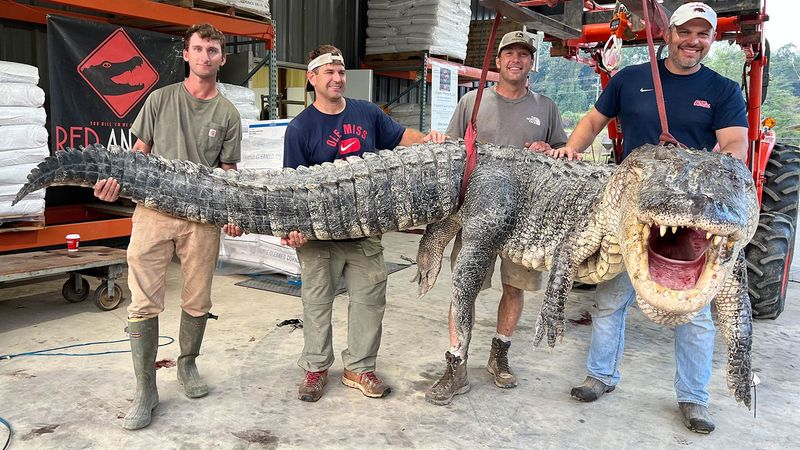
Mississippi’s abundant wetlands are home to a diverse array of wildlife, where the West Central Alligator Hunting Zone hosts some of the largest alligators ever recorded.
In August 2023, a team of hunters comprising Tanner White, Don Woods, Will Thomas, and Joey Clark captured a massive alligator measuring 14 feet 3 inches and weighing 802.5 pounds. This remarkable capture set a new state record, highlighting the thrill of hunting in Mississippi’s vast natural landscapes.
The accomplishment of these hunters underscores the dedication and expertise required to engage with such formidable wildlife. The alligator’s size and strength reflect the rich biodiversity of the region, where thriving ecosystems support a variety of large reptiles.
The story of this record-breaking alligator showcases the excitement and challenges of wildlife hunting, drawing attention to the importance of sustainable practices and conservation.
This Mississippi giant serves as a powerful reminder of the wonders that await in the state’s swamps and marshes. It inspires outdoor enthusiasts to explore, appreciate, and protect the unique habitats that allow such impressive creatures to exist.
The West Central Record-Breaker is more than just a statistic; it embodies the spirit of adventure and respect for the natural world.
6. Texas – James E. Daughtrey Trophy
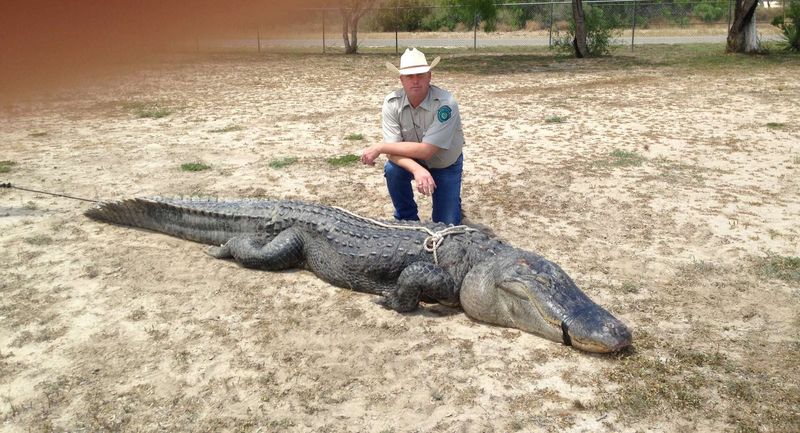
In the wide-open landscapes of Texas, known for its larger-than-life characteristics, stands the story of the James E. Daughtrey Trophy.
In May 2013, 18-year-old Braxton Bielski captured an impressive alligator measuring 14 feet 3 inches and weighing 800 pounds during a public hunt. This remarkable feat not only set a record but also highlighted the adventurous spirit that defines Texas and its wildlife enthusiasts.
The capture of this Texas giant was an embodiment of youthful determination and skill, showcasing the opportunities that the James E. Daughtrey Wildlife Management Area offers for wildlife encounters. The area’s diverse ecosystem provides a haven for large reptiles, allowing them to thrive amidst the natural splendor of the Lone Star State.
The story of Braxton and his record-setting alligator serves as an inspiration for aspiring hunters and nature lovers. It emphasizes the importance of responsible wildlife management and conservation, ensuring that future generations can experience the wonders of Texas’s natural heritage.
The James E. Daughtrey Trophy remains a testament to the exhilarating blend of challenge and achievement that defines the pursuit of wildlife adventures in Texas.





